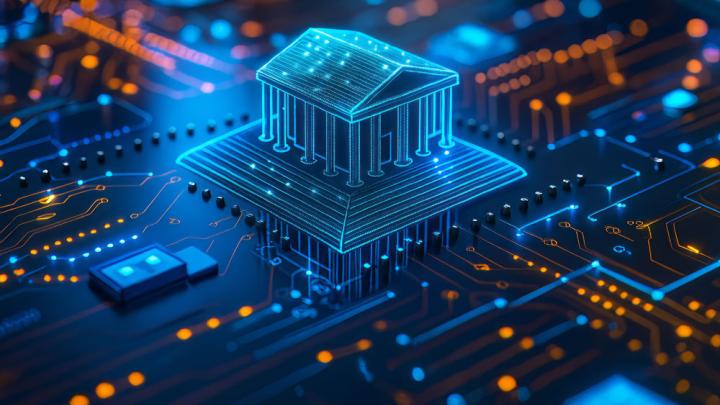Access Controls
What are Access Controls?
Access controls are the mechanisms, policies, and procedures that regulate who or what can access specific systems, data, or physical spaces. They are a foundational element of cybersecurity and physical security. The purpose of access controls is to ensure that only authorized individuals or entities can access sensitive assets, mitigating risks of unauthorized access, data breaches, and theft.
Physical vs. Logical Access Controls
Access controls are broadly categorized into two types: physical and logical. Physical access controls manage entry to tangible spaces, such as offices, data centers, or server rooms. Examples include locks, security guards, key cards, and biometric scanners. Logical access controls, on the other hand, govern access to digital systems and resources, such as networks, applications, databases, or files. These controls include passwords, multi-factor authentication (MFA), role-based permissions, and firewalls. While they serve different purposes, physical and logical access controls often complement one another in a comprehensive security strategy.
Basic Elements of Physical Access Control
Physical access control systems rely on four key elements to function effectively:
- Authorization: Determining who is allowed access to specific areas.
- Authentication: Verifying the identity of the individual or entity requesting access, often through credentials like ID cards or biometric scans.
- Access: Granting or denying entry based on authorization and authentication results.
- Audit: Recording access events to ensure accountability and enable investigation of security incidents.
These physical access control pillars are specific to physical security systems and deal with how access is granted or restricted in a tangible space. They include authorization, authentication, access, and audit—a sequence that describes the process and operational components of managing entry to physical locations.
Network Access Controls & Access Control Systems
Network access controls (NAC) are a subset of logical access controls specifically designed to manage who can connect to an organization's network. NAC systems assess devices attempting to connect, ensuring they meet security policies (e.g., up-to-date antivirus software) before granting access.
Access control systems, whether physical or logical, are integral to modern security frameworks. They serve as gatekeepers, ensuring the right people access the right resources at the right time. By leveraging various access control models and principles, organizations can tailor their systems to meet both operational and security needs.
3 Principles of Access Control
The effectiveness of any access control system relies on three core principles:
- Identification: Establishing who is requesting access, typically through a username, ID card, or biometrics.
- Authentication: Confirming the identity of the requester using something they know (password), have (security token), or are (fingerprint).
- Authorization: Allowing or restricting access based on predefined permissions and policies.
The principles above are broader concepts that apply to both physical and logical access controls. They focus on ensuring access is only granted to verified and permitted users.
Types of Access Control Models
Organizations implement different access control models based on their security needs:
-
Discretionary Access Control (DAC): The data owner determines who can access specific resources. While flexible, it can be less secure as permissions may be inconsistently assigned.
-
Mandatory Access Control (MAC): Access is regulated by a central authority based on predefined policies, often using classifications (e.g., "Top Secret"). It is more rigid and commonly used in government or military settings.
-
Role-Based Access Control (RBAC): Permissions are assigned based on roles within an organization. For example, a system administrator may have broader access than a standard user.
-
Attribute-Based Access Control (ABAC): Access is granted based on a combination of attributes, such as user identity, location, device, or time of access.
Why is Access Control Important?
Access control is critical for protecting an organization's assets, whether physical or digital. By restricting access to sensitive areas and information, it mitigates insider threats, reduces the likelihood of cyberattacks, and ensures compliance with industry regulations. In an era where data breaches can result in severe financial and reputational damage, robust access controls are non-negotiable.
Benefits of Access Control Systems
Effective access control systems provide numerous benefits, including:
- Enhanced Security: By restricting access to authorized individuals, organizations reduce the risk of data breaches and unauthorized activities.
- Compliance: Many industries have regulations that mandate robust access controls, such as GDPR, HIPAA, and PCI DSS.
- Operational Efficiency: Automated access control systems streamline operations by reducing the need for manual intervention.
- Auditability: Comprehensive logs facilitate monitoring, compliance audits, and forensic investigations.
Protect Your Attack Surface with Bitsight
An industry-leading solution
Bitsight is the world’s leading provider of cyber risk intelligence, transforming how security leaders manage and mitigate risk. Leveraging the most comprehensive external data and analytics, Bitsight empowers organizations to make confident, data-backed decisions and equips security and compliance teams from over 3,300 organizations across 70+ countries with the tools to proactively detect exposures and take immediate action to protect their enterprises and supply chains. Bitsight customers include 38% of Fortune 500 companies, 4 of the top 5 investment banks, and 180+ government agencies and quasi-governmental authorities, including U.S. and global financial regulators.
Extensive visibility
Bitsight operates one of the largest risk datasets in the world. Leveraging over 10 years of experience collecting, attributing, and assessing risk across millions of entities, we combine the power of AI with the curation of technical researchers to unlock an unparalleled view of your organization. Bitsight offers more complete visibility into important risk areas such as botnets, mobile apps, IoT systems, and more. Our cyber data collection and scanning capabilities include:
- 40 million+ monitored entities
- 540 billion+ cyber events in our data lake
- 4 billion+ routable IP addresses
- 500 million+ domains monitored
- 400 billion+ events ingested daily
- 12+ months of historical data
Superior analytics
Bitsight offers a full analytics suite that addresses the challenges of peer comparison, digital risk exposure, and future performance.
Ratings validation
Bitsight is the only rating solution with third-party validation of correlation to breach from AIR Worldwide and IHS Markit.
Quantifiable outcomes
Bitsight drives proven ROI with significant operational efficiency and risk reduction outcomes.
Prioritization of risk vectors
Bitsight incorporates the criticality of risk vectors in to calculation of Security Ratings, highlighting risk in a more diversified way to ensure the most critical assets and vulnerabilities are ranked higher.

